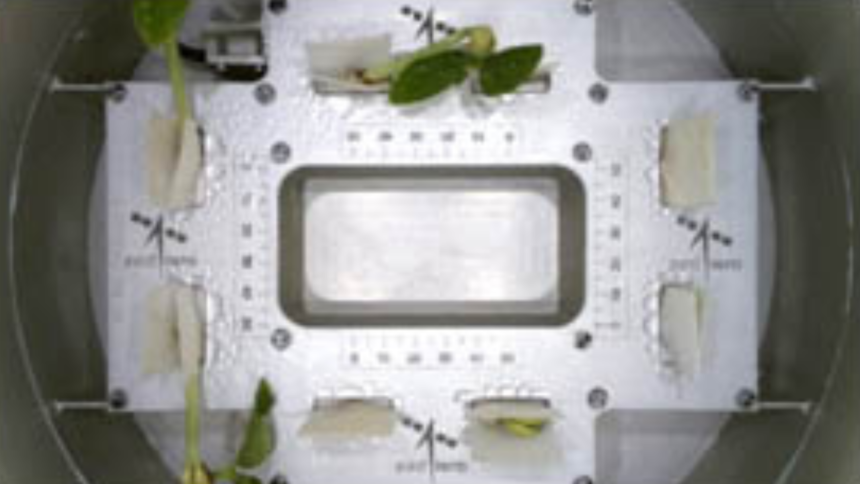NewzVille Desk



The tissue strips also absorb water by capillary action from the soil, the seed gets soaked and germination starts. During germination, based on ground trials, carbon dioxide levels start to increase and oxygen levels start to decrease during the process. After the development of the first green leaves, photosynthesis starts and carbon dioxide levels start to decrease and oxygen levels will start to increase.
The plants will stop growing once the available carbon dioxide levels in the sealed chamber goes very low. There are sensors within the module to measure the concentration of carbon dioxide & oxygen, pressure, temperature, relative humidity and soil moisture.
These sensors are powered by an electronics module and the data is acquired and sent to ground by telemetry during visible orbits.
A high resolution camera with associated electronics is provided inside at the top of the module to observe the continuous growth of the plant and capture images at periodic intervals.
During photosynthesis, plants require sufficient illumination mostly in the Photosynthetically Active Radiation (PAR) spectrum (400 to 700 nm). Four warm LEDs and four cool LEDs are provided at the top of the chamber to provide the necessary PAR and also illumination during image capture.
The lights are programmed to be ON for 16 hours and OFF for 8 hours simulating day and night conditions for the plant. Light duration can be changed based on various requirements.
The next phase of CROPS will be for a longer duration (30 to 45 days) envisaging plant growth beyond two leaves stage with an active control system to regulate percentage of carbon dioxide, oxygen, relative humidity, soil moisture and temperature for sustained growth of plants in space.
The electronics module will switch on the heater when the lower temperature limit is reached and the temperature will slowly start to increase. The heater is switched off automatically when the upper temperature limit is reached. The temperature limits and sensors can be used in various configurations as per the specific experiment requirement.
CROPS -1 was flown in PSLV C60 mission in POEM 4 payload to demonstrate germination of a seed and sustenance up to two leaves stage in space for 5 to 7 days.
Cowpea (Scientific name: Vigna Unguiculata) was chosen based on ground trials on a variety of seeds due to its shorter germination time. After launch and main satellite separation, POEM platform was lowered to 350 km orbit and CROPS -1 payload was switched on.
All system parameters were found normal and the temperature regulated precisely between 20 to 30 degree Celsius. Approximately after 90 minutes, water was injected successfully into the soil medium by operating the electric valve from ground.
Data was acquired during subsequent orbits, which indicated carbon dioxide levels rising indicating germination of the seeds. On the fourth day, seeds sprouting out from the enclosed tissue strips were observed. On the fifth day, two leaves were visible on sprouted seeds indicating successful accomplishment of the objectives.
The next phase of CROPS will be for a longer duration (30 to 45 days) envisaging plant growth beyond two leaves stage with an active control system to regulate percentage of carbon dioxide, oxygen, relative humidity, soil moisture and temperature for sustained growth of plants in space.





